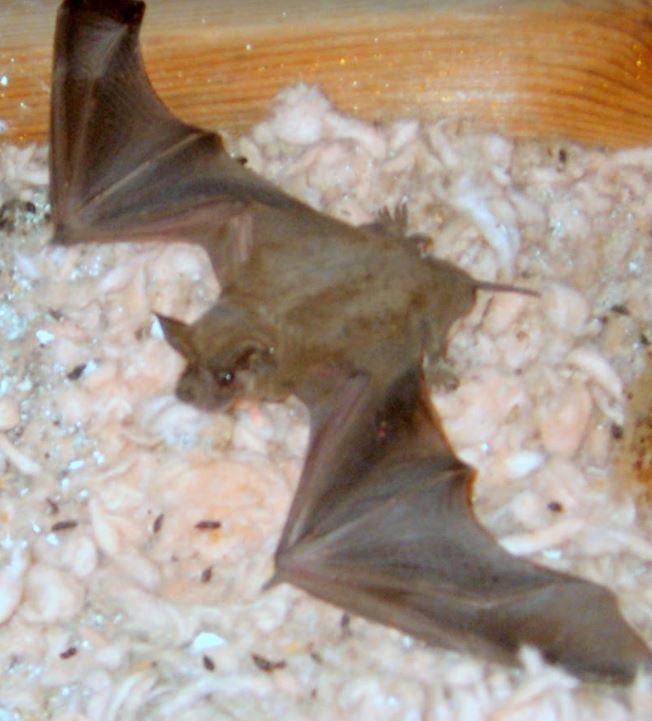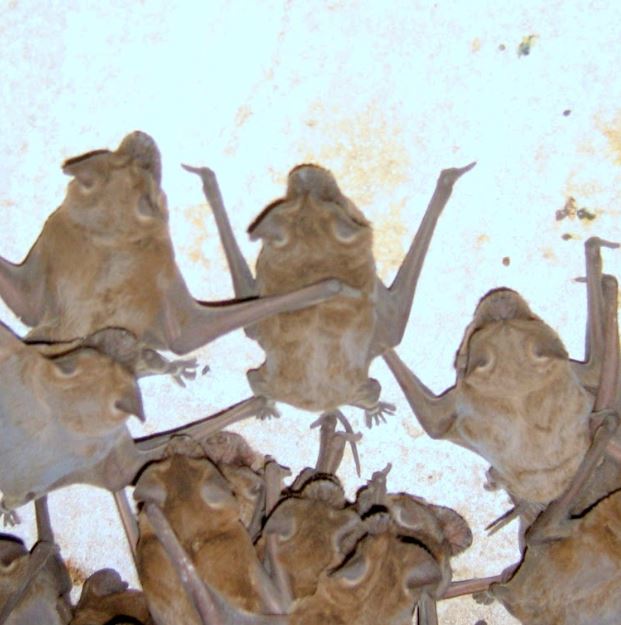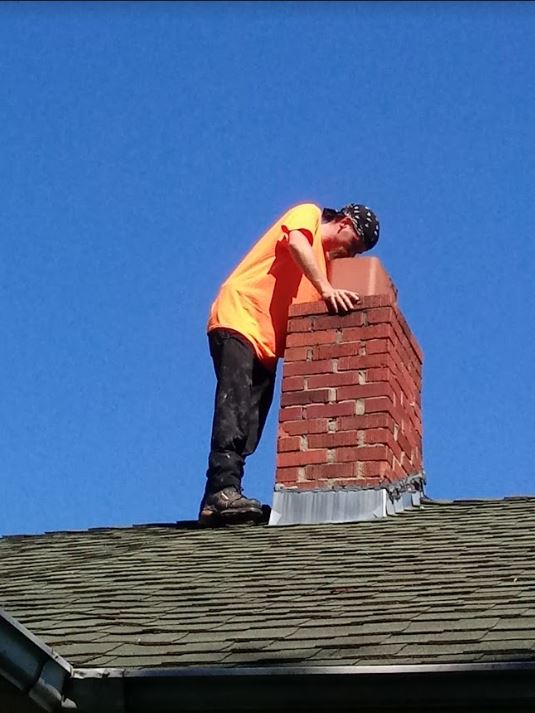GET RID OF BATS ONCE AND FOR ALL
Bats Removal | Fast & Accurate Wildlife Control
Frank Wildlife Removal and exterminator in lower Michigan and Northern Ohio
A bat infestation can be a stressful prospect for any homeowner, especially due to the unexpected nature of it. Despite what you might think, bat infestations are actually quite common! Bat infestations can be hard to detect and, in most cases, the only way to tell that you have a bat infestation is by seeing a bat flying inside of your home. Bats are some of the most destructive creatures when it comes to infestations.
How Do Bats Get Into Homes?
Bats are incredibly small and nimble creatures. They are so small that they can fit through gaps on your roof that are the size of quarters. They use their size to fit through these gaps with ease. Once they enter your home, they will find a nice corner to rest. Bats will most likely enter through rotten shingles or gaps next to your chimney.
Why Do Bats Infest Homes? Where Will They Live?
Bats are just like any other animal, including us. They want to live in a place that’s safe, warm, dry, and comfortable. Your home is the perfect place for bats to live. Unlike other creatures, though, bats will only live in dry, warm, open, and high-up places.
Bats won’t live in crawl spaces because they are too low to the ground. They won’t live in walls, either, because they are too cramped for the bats to nest. This makes your attic the best location for bats to live. Bats are more likely to crawl into your home during a period of extended rain. Bats are more active during this time and will look for dry places to stay.


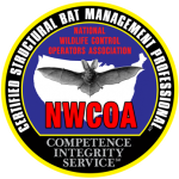

What Does A Bat Infestation Look Like?
Bats are social creatures and love to group together. Because of this, having one bat in your home can lead to having a group of bats in your home. Because they will almost always infest your attic and are relatively quiet creatures, they can be hard to detect. Bats are nocturnal, meaning they aren’t active during the day. This can make it even harder for homeowners to detect whether or not they have a bat infestation.
If you do have a bat infestation, you will come across a group of bats sleeping in a dark, secluded corner. Much like on TV, bats sleep upside down. If you come across a group of bats, do not attempt to scare them away. This can result in harm to both you and the bats. If you discover that you have a bat infestation, call us right away. We will be able to remove the bats quickly and efficiently.
Why Should I Remove Bats?
Bats, because they don’t typically keep you awake at night or generate much noise, might seem like creatures that you can leave alone. The opposite is true, however. Bats are incredibly destructive creatures and will leave behind large amounts of waste products. Bats are considered one of the most destructive attic-dwelling creatures that exist.
Unlike rodents or other animals, bats won’t cause damage by chewing on wood in your attic or tearing apart structural features. Bats will cause damage through their urine and feces. In large colonies, urine from bats can soak through the attic and drip down into the rooms below the attic. The result is not only the smell from urine but also water damage. This includes leaks and stains on ceilings and/or walls.
Guano, or the buildup of bat feces, will decompose inside of your attic. This will result in an awful smell that is detectable throughout the entire house. In large, permanent colonies the smell can even be detected from outside.
Can Bats Cause Health Issues?
Yes. Bats can cause a wide variety of issues that will negatively impact your health. Although bats aren’t likely to bite you or a pet, it’s important to remember that bats carry rabies and, if they do happen to bite your or a pet, can spread rabies to you.
The real risk to your health is Histoplasmosis. This disease is particularly dangerous to those with immune disorders, the young, and the elderly. This disease is a fungal infection that impacts the lungs and is spread through spores present in bat’s feces.
How Will We Help?
Bats are unique animals when it comes to infestations. Unlike most other animals, we can’t simply trap them and move them outside of your house. The only effective method of removal when it comes to bats is exclusion. This, in short, means that you allow the bats to leave the attic but not return. To achieve this, we will line potential entrances with tubing or netting that makes it impossible for the bats to return.
The bats will get frustrated and fly off in search of another home. This allows us to clean up the attic space and ensure that the bats won’t have the ability to return. Frank’s Wildlife Removal understands that having a bat infestation can be stressful. We will work with you to ensure that the process is stress-free for you.
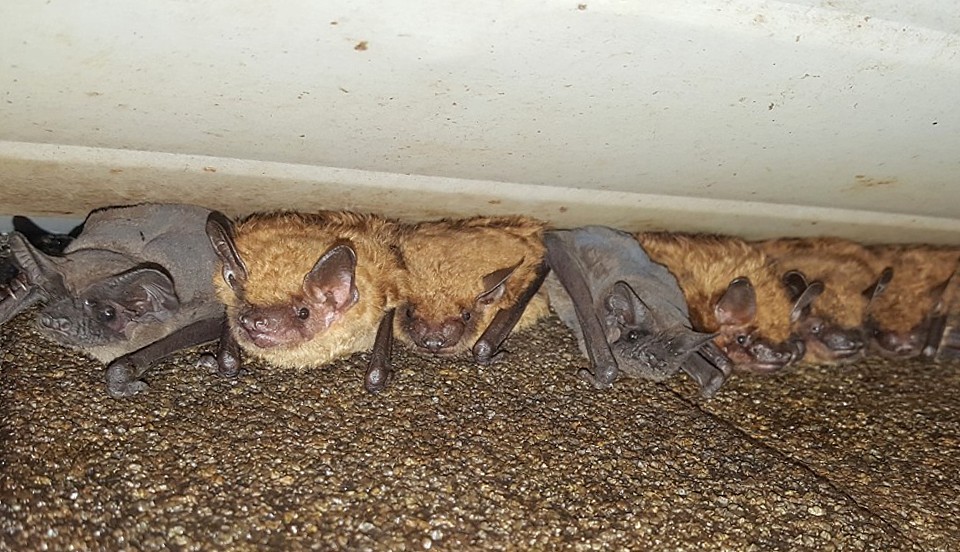
What Kind of Damage Do Bats Cause in The Attic?
A few stray bats hanging in your attic can be more dangerous than you think. Not only are these animals carriers of diseases and bacteria, but they can also cause major home damage. So, if bats have invaded your attic, you need to be prepared and read this post.
We’ll talk about what kind of damage you can expect if bats reside in your attic. We will also talk about our animal removal service at the end of this post. This way you can get rid of any bats and keep your home from getting damaged further.
What Damage Do Bats Cause In Attics:
You might be wondering what kind of damage bats can cause in your home. Are they really all that destructive? Well, to answer this question shortly, bats can create a lot of home damage. This includes structural damage and decay to various surfaces in your attic.
Major Corrosion to The Structure of Your Home
Corrosion is one of the main problems bats can cause when they reside in your attic. Bats won’t actively attack your home, but their feces can create a lot of damage. If left uncleaned, bat poop can become corrosive and eat through many different materials. Stone, wood, and even metals can become damaged and destroyed. Visit batremoval.org to learn more about bat removal tips before it’s too late.
Over time, as bat poop accumulates, the acid in the droppings will eat through structures in your attic and even other areas of your property. No one wants this to happen, as the cost to repair structural damage to any area of your home can be expensive. This is why it is important to get rid of bats as soon as possible.
Create Stains and Cracks In Your Attic
As bat droppings and urine sit in your attic, they will crack and destroy most of the surfaces they touch. In addition, you will have to worry about stains. Stains from bat poop and urine are difficult to remove and might even result in you needing to change the flooring of your attic. This is because of the highly acidic nature of bat feces and urine.
Odors and Health Issues
Further issues can also occur if you leave bats to nest in your home. Not only will structures in your attic become stained and damaged, but the smell in your attic, and in your home will become unpleasant and even dangerous.
As bats leave more and more dropping and urine puddles, the air in your home will become foul and bacteria-filled. Lung issues and other health problems can crop up as a result. This is another reason you need to get bats out of your home as soon as possible.
Contact Frank’s Wildlife Removal
Bats can be dangerous to handle on your own. Really, it is best to leave wildlife removal to the professionals. So, if you have a bat problem in your attic, feel free to contact us today. Frank’s Wildlife removal is fully equipped to handle bats safely and humanely.
We operate Monday through Sunday and are happy to help you with any type of animal infestation. Our services are fast, efficient, and guaranteed to keep bats from coming back into your home. We can be contacted on our website or by phone at (810)-691-4967.
How to Inspect Your Home for Evidence of Bats
Bats have captivated our imaginations for centuries, but we never want to suspect they’ve taken up residence in our home! If you’ve heard fluttering, shuffling, or scratching sounds from your attic, you may very well be right to suspect a bat infestation.
Bats tend to seek shelter in dark and unpopulated areas, which makes a home’s attic prime real estate. They’ve also been known to find their way between a home’s drywall and studs, only to find themselves unable to get out.
The best time to look for bats in an area like your attic is during daytime hours after bats have returned from a night of feeding. To avoid a bat being startled and taking flight, try to keep overhead lights off and shine a flashlight along with the ceiling and around the joists.
If you are unable to find a bat on your first pass of the area, here are some more signs that may point to a bat infestation.
- You notice an increase in bat traffic around your home. A bat’s diet primarily consists of insects, and most animals choose to roost in areas close to their food source. You’ll find that insects often take up residence in trees, ponds, and a home’s water features. Once temperatures cool at night, you’ll find that many insects like mosquitoes take flight. As a result, you may see bats fluttering and swooping in areas close to your home.
- You see bat droppings and other waste. Bat droppings, called guano, can accumulate in areas where bats live during the day. You may find scattered areas with dark brown or gray droppings, especially near their entry points. As a creature that usually clings to high surfaces, the guano would be dropped and may not have concentrated collections that you may see on a primarily ground-dwelling animal. The presence of bat urine is also highly detectable due to its pungent odor. Before finding bat guano, chances are you’ll notice an odor throughout the house with an intense concentration in the infested area, like an attic.
- You’ve found a dead bat. Always a gruesome discovery, you may have found the body of a dead bat. Bats can sometimes take ill or may meet their demise despite shockingly accurate echolocation by colliding with a building. Or perhaps even more unsettling, your cat or dog may find or bring you a dead bat. If your pet does come in contact with a bat, alive or dead, be sure to consult your veterinarian for possible treatment.
- There are greasy stains on walls and potential entry points. Much like mice and rats, bats have a skeleton that is quite flexible. Because of this, they are able to squeeze through unfathomably small spaces to find shelter from predators. When squeezing into small spaces, they can often leave behind greasy, brown streaks on eaves of houses, along siding, or around vented areas.
How to Get Rid of Bats
The safest way to rid your home of bats will be to contact a pest professional. You will also want to be proactive in sealing potential entrances to your home by fitting vents with breathable screens and replacing those that may be damaged.
You may also consider treating the insect population on your property or contacting authorities responsible for insect management in surrounding areas.
Moving forward, once you have proactively sealed your home against bat populations, you may consider mounting a bat house for visiting bat colonies (also called cauldrons). These serve as shelters from predators and allow bats to rest during the daytime. Bats play an essential role in the ecosystem, especially in controlling insect populations. These homes provide a safer and more preferable habitat for them.
Once your home is free from bats, be sure to perform regular inspections of your home each season to check for bats and other pests, as well as to identify areas where they may enter.
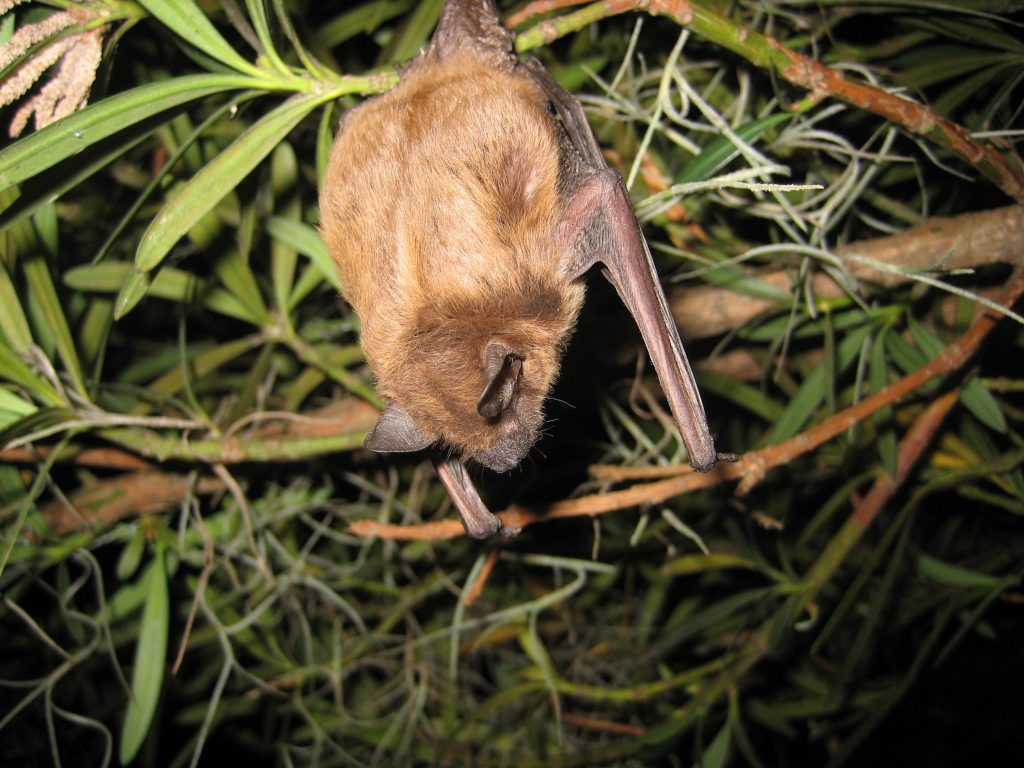
How to Remove Bats From Chimney?
It’s not uncommon for wild animals, like squirrels, bats, or birds, to get inside the chimney flue, especially if you’re not using any type of coverage for your chimney. However, their presence inside is no joke, and shouldn’t be taken as such. The presence of wild animals and their nests can pose a serious fire hazard that can cause your entire house to burn down.
This is why you should always check the chimney flue after long periods of inactivity, and remain vigilant about your chimney.
How do you know there are bats in the chimney?
There are some common telltale signs that the critter inside your chimney is, in fact, a bat (or more common, multiple bats):
- High-pitched noises. If you’re constantly hearing squeaking, chirping noises inside the chimney, accompanied by the sound of wing-flapping, then it’s quite likely you’ve got bats. You’re most likely to hear these noises in the evening, or even at night, since bats sleep during the daytime (thus, if you’re hearing noises in the day, then it’s more likely to be a squirrel);
- Guano. An accumulation of the highly toxic, corrosive bat droppings around the top of your chimney.
- Strong scent. If you’re getting a whiff of a distinctive ammonia-like scent, it’s quite likely from the bat’s droppings.
Obviously, the most telltale sign is the sighting of bats.
How can you remove bats from the chimney?
Hire a professional.
Since messing up in this task can lead to a serious fire, we wouldn’t recommend trying your hand at DIY bat removal. Honestly, your best bet here would be to hire a professional wildlife removal expert to perform live bat exclusion. This is a practice where a special device is fitted over the entry to your chimney, which allows the bats to fly out, but not enter back in.
Since exclusion can be tricky, especially if there are baby bats involved (which can’t fly), it’s best to leave it up to a professional.
Close the damper.
When removing bats from inside the chimney, one important step is first closing the damper. Otherwise, the animals may get frightened or disoriented and end up wandering into your home. Which poses a whole new removal problem.
Don’t start a fire.
Some people may deem it logical to start a fire to scare off the bats, and convince them to leave naturally. But that’s not actually how it works. Under no circumstances should you start a fire, if you’ve got animals inside the chimney. Most of them are quite likely to panic, and not be able to get out of the chimney quick enough. This would incinerate the bats, while leaving others to die from the thick smoke. And once again, we don’t want that.
Don’t try repellents, deterrents, or poisons.
While repellents may be effective in some cases, they are unlikely to yield the desired result with bats in your chimney. Similarly, we wouldn’t recommend the usage of poisons, as these often cause more harm than good. Since the poisoned bat won’t die right away, it’ll most likely look for shelter while it’s weakened. And what better shelter than in your chimney? Thus, it will die inside, leading to smell, and without having solved your problem.
Seal the holes.
What you can do, however, before you (or a professional) exclude the bats, is seal any possible entry points in your chimney structure. Otherwise, you’re just getting them to fly out, and then squeeze back in. and if you’ve installed a chimney cap meanwhile, you risk getting them trapped inside for good.
Last but not least, install a chimney cap.
To prevent such problems in the future.

How to Prevent Bats From Entering Your Property?
When dealing with a bat infestation, there’s no better advice than the adage: “Prevention is better than cure.” Why? Several bat species in the United States are endangered and protected by wildlife laws. Hence, getting rid of them is complicated and must be done to avoid legal troubles.
Why not prevent bats from entering your property to avoid such complications? This post will show you all you need to do to make your property a no-entry zone for bats.
- Eliminate entry holes to your building
It’s no surprise that bats love to roost in dark, high, and warm sites. This makes places like the attic, chimney, and within walls prime targets for bat infestation. That’s why you must ensure these areas are inaccessible to bats.
First, inspect your entire building to look for a potential entry hole into your attic. Seal up these holes with caulk or hardware cloth. Also, look out for missing roof tiles. You must also inspect your chimney to look for broken bricks and fix them. Install a chimney cap if none is present. Look out for broken walls or cracks in the wall and fix them accordingly.
- Eliminate food sources
There are two categories of birds based on what they eat: fruit-eating bats and insect-eating bats. Depending on the predominant species in your area, you must ensure the corresponding food source is absent.
Make sure you deal with insect infestation problems. Get rid of stagnant water to discourage the growth of larvae. Apply insecticides when appropriate.
If you have a garden that’s attracting bats, then you must make your garden inaccessible. One simple trick is to install netting around fruit plants in your garden.
- Build a bat house
If you don’t want bats in your house, why not build them an even more attractive house? Bat boxes provide a sheltered place for bats to nest in the daytime. You can mount them on poles or trees. Just ensure they are mounted at least 10 feet from your building.
- Apply natural repellents
There are numerous bat repellents you can try out. Essential oil sprays – like eucalyptus, mint, cloves, cinnamon, and peppermint essential oils – have a strong smell that’s effective for keeping bats away from your property. Mothball and white phenol are equally good bat repellents. The only challenge is that repellents must be reapplied, so they don’t lose their effectiveness.
- Install light reflectors
Bats also do not like objects that reflect light. Therefore, hanging strips of aluminum foil, mylar balloons, mirrors, or even old CDs can effectively keep bats away.
- Temperature control
Do you know that many bat species prefer a temperature of around 70 to 90 degrees? Hence, you can get rid of bats by increasing the temperature to unfavorable levels. For instance, you can place a heater in your attic or chimney to raise the temperature to over 100 degrees. That instantly makes your attic/chimney a terrible roosting site for bats. When using a heater, ensure there are no flammable materials around.
- Scare them with sound
Bats are most active at night because that’s when it’s most effective for them to use echolocation to move around. But how does echolocation work? Bats give off ultrasound (inaudible to the human ear) that bounces off surfaces and returns to them. That way, they can pinpoint where objects are. They use this strategy to move around, catch prey, and avoid danger.
By installing a sound deterrent, you interfere with a bat’s ability for echolocation. This scares bats, and they tend to avoid such areas. Thankfully, these sound deterrents also emit ultrasonic sound waves so that they won’t be a source of disturbance to humans.
GET FAST QUOTE
Franks Wildlife SERVICES
Service Areas
